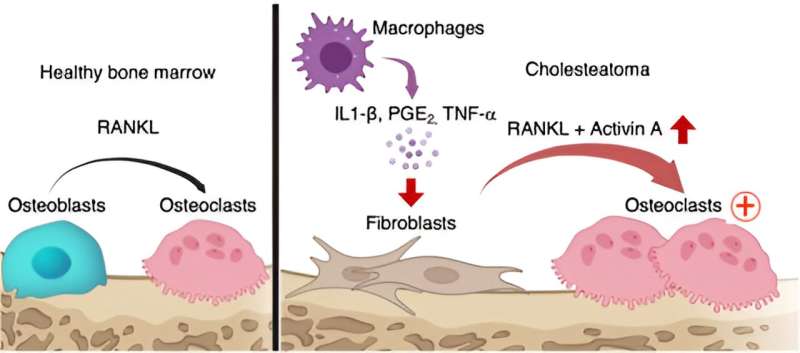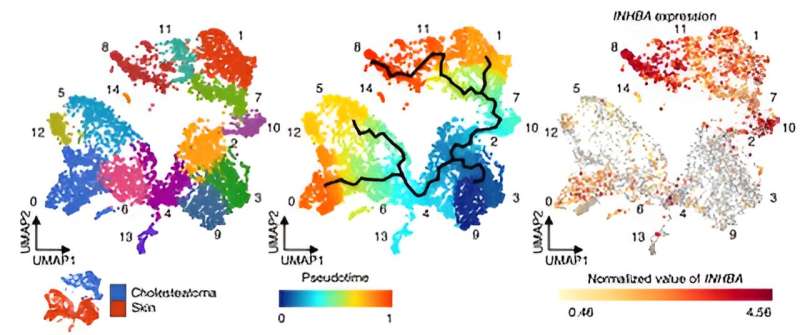This article has been reviewed according to Science X's editorial process and policies. Editors have highlighted the following attributes while ensuring the content's credibility:
fact-checked
peer-reviewed publication
trusted source
proofread
Ear today, gone tomorrow? A new discovery in a cause of inner-ear bone loss

Chronic inflammation of the middle ear can cause several problems and complications that can affect a person's hearing and balance. One such problem is the formation of a cholesteatoma, which is an abnormal collection of cells in the ear that can cause bone erosion if left untreated. In turn, this can cause symptoms such as hearing loss, dizziness, facial paralysis, and even a brain infection.
In a study published recently in Nature Communications, researchers from Osaka University have revealed the cause of cholesteatomas, which may help in developing new therapies for patients who are suffering from this disease.
Cholesteatomas are made up of cysts or bumps in the ear that consist of skin, collagen fibers, skin cells, fibroblasts, keratin, and dead tissue. There are many theories on how these cholesteatomas can cause bone erosion, including the activation of cells responsible for the breakdown of the minerals and matrix of the bone, the presence of inflammatory markers and enzymes, and the accumulation and pressure from dead cells and tissues in the ear. However, the exact mechanism for the creation of cholesteatomas remains unknown.

"A cholesteatoma can still return or happen again even after its surgical removal, so it is important to know what is actually causing it," says lead author Kotaro Shimizu.
To investigate this, researchers looked at human cholesteatoma tissues that were surgically removed from patients. A process called single-cell RNA sequencing analysis was employed to identify cells responsible for triggering bone erosion; these were called osteoclastogenic fibroblasts. This study demonstrated how these fibroblasts expressed an abundant amount of activin A, a molecule that regulates different physiologic functions of the body. The presence of activin A is said to cause bone erosion through a process in which specialized cells initiate bone resorption through a process wherein the minerals and matrix of the bones are broken down and absorbed by the body.

The researchers were successful in showing the relationship between activin A and bone erosion in cholesteatoma. "Our study showed that targeting activin A is a potential treatment in the management of cholesteatomas," states senior author Masaru Ishii.
Currently in clinical settings, the only effective treatment for cholesteatomas is complete surgical removal. However, the discovery of how a cholesteatoma can cause bone erosion in this study offers new hope for developing novel medical treatments as first-line management for cholesteatomas.
More information: Single-cell transcriptomics of human cholesteatoma identifies an activin A-producing osteoclastogenic fibroblast subset inducing bone destruction, Nature Communications (2023). DOI: 10.1038/s41467-023-40094-3





















